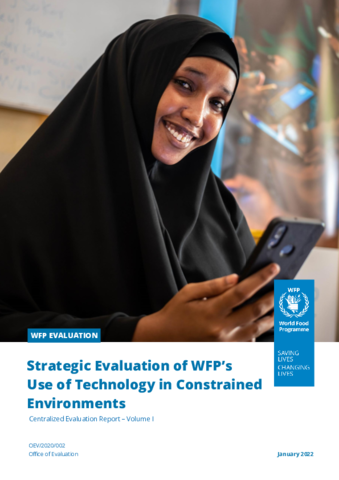
The evaluation was concerned with WFP’s use of digital technologies and data over the period 2014 to mid-2021, in environments that are constrained in terms of humanitarian access or where there are important physical, social or political obstacles to the deployment of digital technologies. It was framed around the four interrelated components of a system including technology, people, policies and processes, and partnerships.
The purpose was to assess whether WFP uses, and is equipped to use, the most appropriate digital technologies to achieve its objectives under constrained conditions and whether it has put in place appropriate measures to mitigate and manage risks to populations and operations resulting from the use of digital technologies in constrained environments.
The evaluation concluded that:
- The use of digital technologies has increased WFP’s effectiveness, efficiency and adaptability in constrained environments, and digital technologies have had a general positive effect for the people served by WFP.
- WFP has developed a solid base of policies and processes regarding the development of digital technologies and has made continuous efforts to enhance data protection and cyber-security across the organization.
- There remain some fundamental challenges to the digital transformation of WFP, including fragmented governance and responsibilities, unresolved tensions between centralized technology services and the needs of country operations, and the requirement for greater investment in human resources.
- WFP’s rapidly expanding use of digital technology and processing of data are at risk of failing the people it serves by not including them meaningfully in technology choices and by shifting risks to them, especially in constrained environments.
- WFP has demonstrated a robust strategic commitment to its digital transformation, focusing on operational efficiency. This needs to be matched by an equal focus on protection and clear internal and external positioning on the responsible use of digital technology and data.
